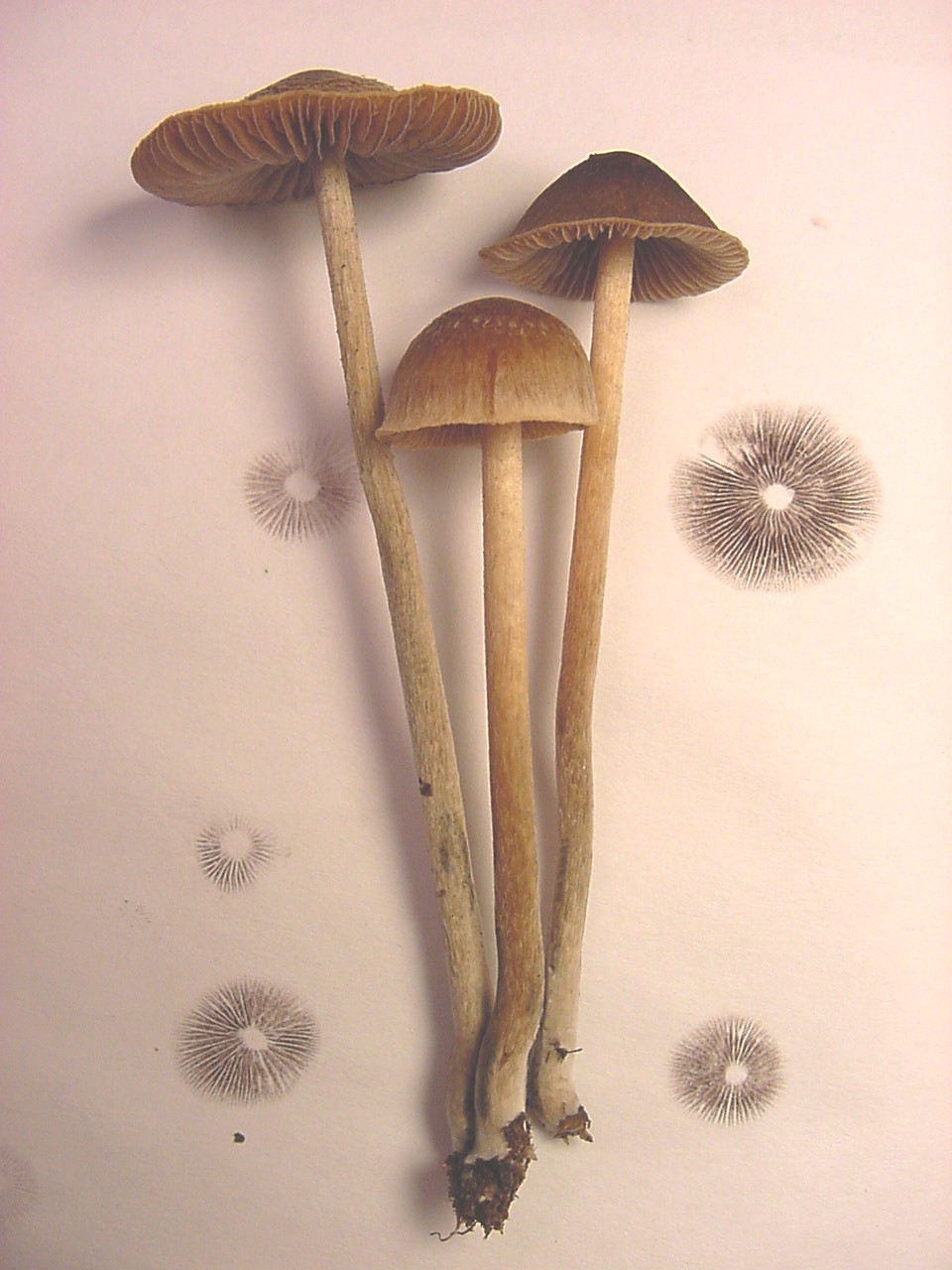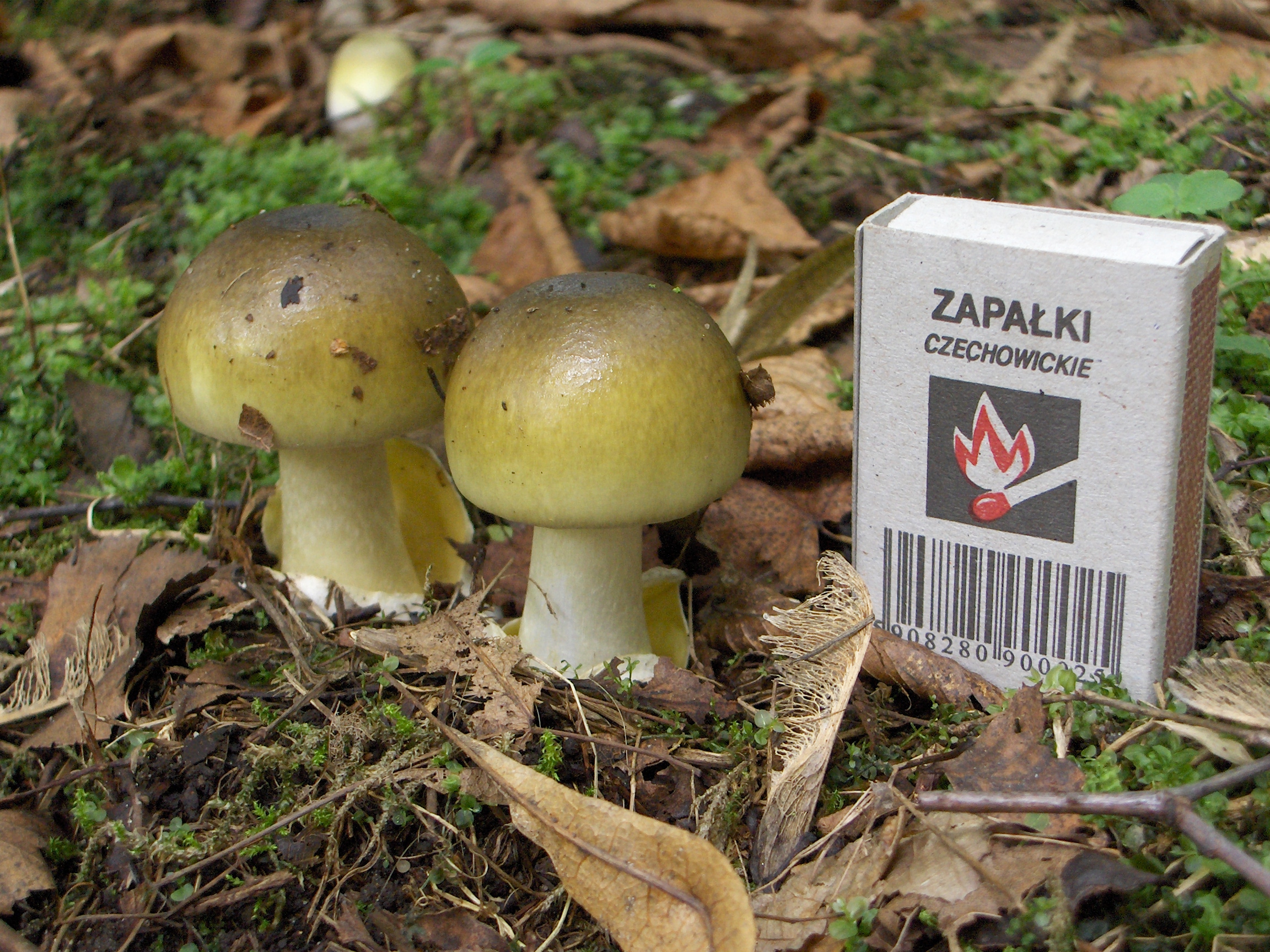|
Pholiotina Rugosa
''Conocybe rugosa'' is a common and highly toxic species of mushroom that is widely distributed in Eurasia and North America. Taxonomy The species was originally described in the genus ''Pholiotina'', and its morphology and a 2013 molecular phylogenetics study supported its continued classification there. Description ''Conocybe rugosa'' has a conical cap that expands to flat, usually with an umbo. It is less than 3 cm across, has a smooth brown top, and the margin is often striate. The gills are rusty brown, close, and adnexed. The stalk is 2 mm thick and 1 to 6 cm long, smooth, and brown, with a prominent and movable ring. The spores are rusty brown, and it may be difficult to identify the species without a microscope. Habitat and distribution The species grows in woodchips, flowerbeds and compost piles. It has been found in Europe, Asia and North America. It is especially common in the Pacific Northwest. Toxicity This species is deadly poisonous, the fruit ... [...More Info...] [...Related Items...] OR: [Wikipedia] [Google] [Baidu] |
Charles Horton Peck
Charles Horton Peck (March 30, 1833 – July 11, 1917) was an American mycologist of the 19th and early 20th centuries. He was the New York State Botanist from 1867 to 1915, a period in which he described over 2,700 species of North American fungi. Biography Charles Horton Peck was born on March 30, 1833, in the northeastern part of the town Sand Lake, New York, now called Averill Park. After suffering a light stroke early in November 1912 and then a severe stroke in 1913, he died at his house in Menands, New York, on July 11, 1917. lamellae. In 1794, Eleazer Peck (his great grandfather) moved from Farmington, Connecticut to Sand Lake, attracted by oak timber that was manufactured for the Albany market. Later on, Pamelia Horton Peck married Joel B., both from English descent, and became Charles Peck's parents. Even though his family was rich and locally prominent, his education was provincial. During his childhood, he used to enjoy fishing and hunting pigeons using a net w ... [...More Info...] [...Related Items...] OR: [Wikipedia] [Google] [Baidu] |
Lepiota
''Lepiota'' is a genus of gilled mushrooms in the family Agaricaceae. All ''Lepiota'' species are ground-dwelling saprotrophs with a preference for rich, calcareous soils. Basidiocarps (fruit bodies) are agaricoid with whitish spores, typically with scaly caps and a ring on the stipe. Around 400 species of ''Lepiota'' are currently recognized worldwide. Many species are poisonous, some lethally so. Taxonomy History ''Agaricus'' section ''Lepiota'' was originally published in 1797 by South African-born mycologist Christian Hendrik Persoon. It was subsequently raised to the rank of genus by Samuel Frederick Gray. As originally conceived, the genus was a mix of agarics with rings on their stems, including species now placed in '' Armillaria'', '' Cortinarius'', and '' Pholiota''. In 1822, however, the influential Swedish mycologist Elias Magnus Fries restricted ''Lepiota'' to white-spored, ringed agarics. Based on macro- and micromorphology, later authors gradually refi ... [...More Info...] [...Related Items...] OR: [Wikipedia] [Google] [Baidu] |
Fungi Of Asia
A fungus (: fungi , , , or ; or funguses) is any member of the group of eukaryotic organisms that includes microorganisms such as yeasts and molds, as well as the more familiar mushrooms. These organisms are classified as one of the traditional eukaryotic kingdoms, along with Animalia, Plantae, and either Protista or Protozoa and Chromista. A characteristic that places fungi in a different kingdom from plants, bacteria, and some protists is chitin in their cell walls. Fungi, like animals, are heterotrophs; they acquire their food by absorbing dissolved molecules, typically by secreting digestive enzymes into their environment. Fungi do not photosynthesize. Growth is their means of mobility, except for spores (a few of which are flagellated), which may travel through the air or water. Fungi are the principal decomposers in ecological systems. These and other differences place fungi in a single group of related organisms, named the ''Eumycota'' (''true fungi'' or ''Eum ... [...More Info...] [...Related Items...] OR: [Wikipedia] [Google] [Baidu] |
Fungi Of Europe
A fungus (: fungi , , , or ; or funguses) is any member of the group of eukaryotic organisms that includes microorganisms such as yeasts and mold (fungus), molds, as well as the more familiar mushrooms. These organisms are classified as one of the kingdom (biology)#Six kingdoms (1998), traditional eukaryotic kingdoms, along with Animalia, Plantae, and either Protista or Protozoa and Chromista. A characteristic that places fungi in a different kingdom from plants, bacteria, and some protists is chitin in their cell walls. Fungi, like animals, are heterotrophs; they acquire their food by absorbing dissolved molecules, typically by secreting digestive enzymes into their environment. Fungi do not photosynthesize. Growth is their means of motility, mobility, except for spores (a few of which are flagellated), which may travel through the air or water. Fungi are the principal decomposers in ecological systems. These and other differences place fungi in a single group of related o ... [...More Info...] [...Related Items...] OR: [Wikipedia] [Google] [Baidu] |
Fungi Of North America
A fungus (: fungi , , , or ; or funguses) is any member of the group of eukaryotic organisms that includes microorganisms such as yeasts and molds, as well as the more familiar mushrooms. These organisms are classified as one of the traditional eukaryotic kingdoms, along with Animalia, Plantae, and either Protista or Protozoa and Chromista. A characteristic that places fungi in a different kingdom from plants, bacteria, and some protists is chitin in their cell walls. Fungi, like animals, are heterotrophs; they acquire their food by absorbing dissolved molecules, typically by secreting digestive enzymes into their environment. Fungi do not photosynthesize. Growth is their means of mobility, except for spores (a few of which are flagellated), which may travel through the air or water. Fungi are the principal decomposers in ecological systems. These and other differences place fungi in a single group of related organisms, named the ''Eumycota'' (''true fungi'' or ''Eum ... [...More Info...] [...Related Items...] OR: [Wikipedia] [Google] [Baidu] |
Deadly Fungi
Deadly may refer to: * Deadliness, the ability to cause death Arts and entertainment * ''Deadly'', a 2011 novel by Julie Chibbaro * ''Deadly'', a children's book series by Morris Gleitzman and Paul Jennings * ''Deadly'' (Australian TV series), an Australian children's television cartoon series * ''Deadly'' (film), a 1991 Australian film * ''Deadly'' (franchise), a British wildlife TV documentary series * Deadly Awards, also known as The Deadlys, awards for excellence given to Indigenous Australians for achievement in music, sport, entertainment and community * ''Deadly'' film series, an Indian Kannada-language film series including ** ''Deadly Soma'' (2005) ** ''Deadly-2'' (2010) * ''Karla'' (film), a 2006 American movie originally titled ''Deadly'' Other uses * Alan Dedicoat (born 1954), BBC announcer nicknamed "Deadly" * Deadly, a word in Aboriginal Australian English meaning excellent, similar to "wicked" or "awesome" in English slang See also * Lethal (disambiguation ... [...More Info...] [...Related Items...] OR: [Wikipedia] [Google] [Baidu] |
Bolbitiaceae
The Bolbitiaceae are a family (biology), family of mushroom-forming basidiomycete fungi. A 2008 estimate placed 17 genera and 287 species in the family. Bolbitiaceae was circumscription (taxonomy), circumscribed by mycologist Rolf Singer in 1948. Description This family is of mushroom-forming species that have a hymenium on lamella (mycology), gills, brown spores and a hymenoderm pileipellis. Differences in genera ''Bolbitius'' are mushrooms which are thin, ''Mycena''-like, with gelatinous Pileus (mycology), cap surface. These lack a partial veil, veil, are saprotrophic, and tend to be found with grass. ''Conocybe'' are mushrooms which are thin, ''Mycena''-like, with a dry cap surface. These are small and saprotrophic, and tend to be found with grass. These have cheilocystidia which are capitate. ''Pholiotina'' are mushrooms which are thin, ''Mycena''-like, with a dry cap surface. These are small and saprotrophic, and tend to be found with grass, and have a veil. Some have ... [...More Info...] [...Related Items...] OR: [Wikipedia] [Google] [Baidu] |
List Of Deadly Fungi
Although many people have a fear of mushroom poisoning by "toadstool A mushroom or toadstool is the fleshy, spore-bearing fruiting body of a fungus, typically produced above ground on soil or another food source. ''Toadstool'' generally refers to a poisonous mushroom. The standard for the name "mushroom" is ...s", only a small number of the many macroscopic fruiting bodies commonly known as mushrooms and toadstools have proven fatal to humans. This list is not exhaustive and does not contain many fungi that, although not deadly, are still harmful. For a less-detailed list of fungi that include non-deadly poisonous species, see List of poisonous fungi. Fungi with significant risk of death if consumed Fungi where isolated deaths have been reported See also * List of poisonous fungus species * Mycotoxicology Footnotes {{DEFAULTSORT:Deadly fungus species Causes of death Death-related lists * Deadly fungi, List of ... [...More Info...] [...Related Items...] OR: [Wikipedia] [Google] [Baidu] |
Psilocybe
''Psilocybe'' ( ) is a genus of gilled mushrooms, growing worldwide, in the family Hymenogastraceae. Many species contain the Psychedelic drug, psychedelic compounds psilocybin and psilocin. Taxonomy Taxonomic history A 2002 study of the molecular phylogeny of the agarics indicated the genus ''Psilocybe'' as then defined was polyphyletic, falling into two distinct clades that are not directly related to each other. The blue-staining Hallucinogenic mushroom, hallucinogenic species constituted one clade and the non-bluing species the other. The previous Type (biology), type species of the genus, ''Psilocybe '' (now ''Deconica montana''), was in the non-bluing clade, but in 2010, the type species was changed to ''Psilocybe semilanceata, P. semilanceata'', a member of the bluing clade. A 2006 molecular phylogenetic study of the Agaricales by Matheny and colleagues, further demonstrated the separation of the bluing and non-bluing clades of ''Psilocybe'' in a larger, strongl ... [...More Info...] [...Related Items...] OR: [Wikipedia] [Google] [Baidu] |
Amanita
The genus ''Amanita'' contains about 600 species of agarics, including some of the most toxic known mushrooms found worldwide, as well as some well-regarded Edible mushroom, edible species (and many species of unknown edibility). The genus is responsible for approximately 95% of fatalities resulting from mushroom poisoning, with the death cap accounting for about 50% on its own. The most potent toxin present in these mushrooms is . The genus also contains many edible mushrooms, but mycologists discourage mushroom hunters, other than experts, from selecting any of these for human consumption. Nonetheless, in some cultures, the larger local edible species of ''Amanita'' are mainstays of the markets in the local growing season. Samples of this are ''Amanita zambiana'' and other fleshy species in central Africa, ''Amanita basii, A. basii'' and similar species in Mexico, ''Amanita caesarea, A. caesarea'' and the "Blusher" ''Amanita rubescens, A. rubescens'' in Europe, a ... [...More Info...] [...Related Items...] OR: [Wikipedia] [Google] [Baidu] |
Roy Watling
Roy Watling (born 1938) is a Scottish mycologist who has made significant contributions to the study of fungi both in the identification of new species and correct taxonomic placement, as well as in fungal ecology. Biography Watling was the Head of Mycology and Plant Pathology and Acting Regius Keeper of the Royal Botanic Garden Edinburgh. He was a visiting professor at Ramkhamhaeng University in Bangkok, Thailand. He was awarded a Patrick Neill Medal and an Outstanding Contribution to Nature Award from the Royal Society for the Protection of Birds. He is a member of the German, American, and Dutch Mycological Societies and the North American Mycological Association. Since his retirement, he has led fungal forays and education events for youth in and around Edinburgh. He was president of the Botanical Society of Scotland from 1984 to 1986. In 1997, Watling received the honour of Member of the Most Excellent Order of the British Empire ( MBE) for services to science. In 1998, th ... [...More Info...] [...Related Items...] OR: [Wikipedia] [Google] [Baidu] |




